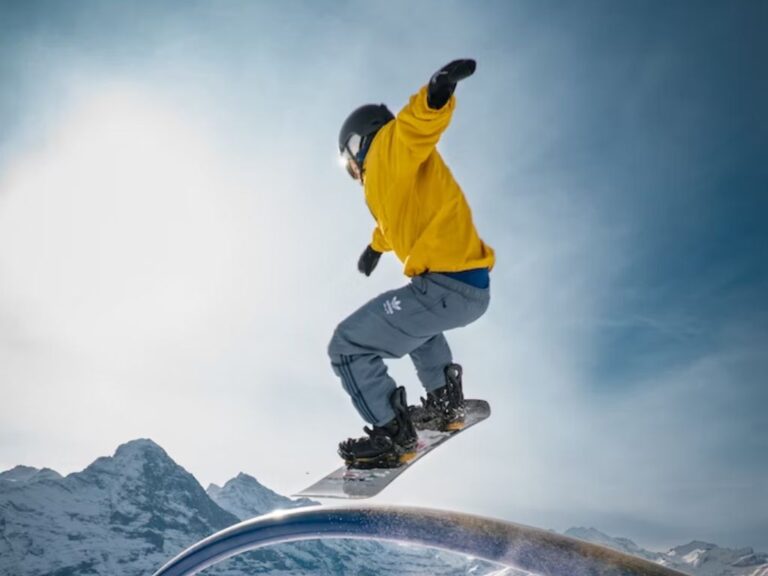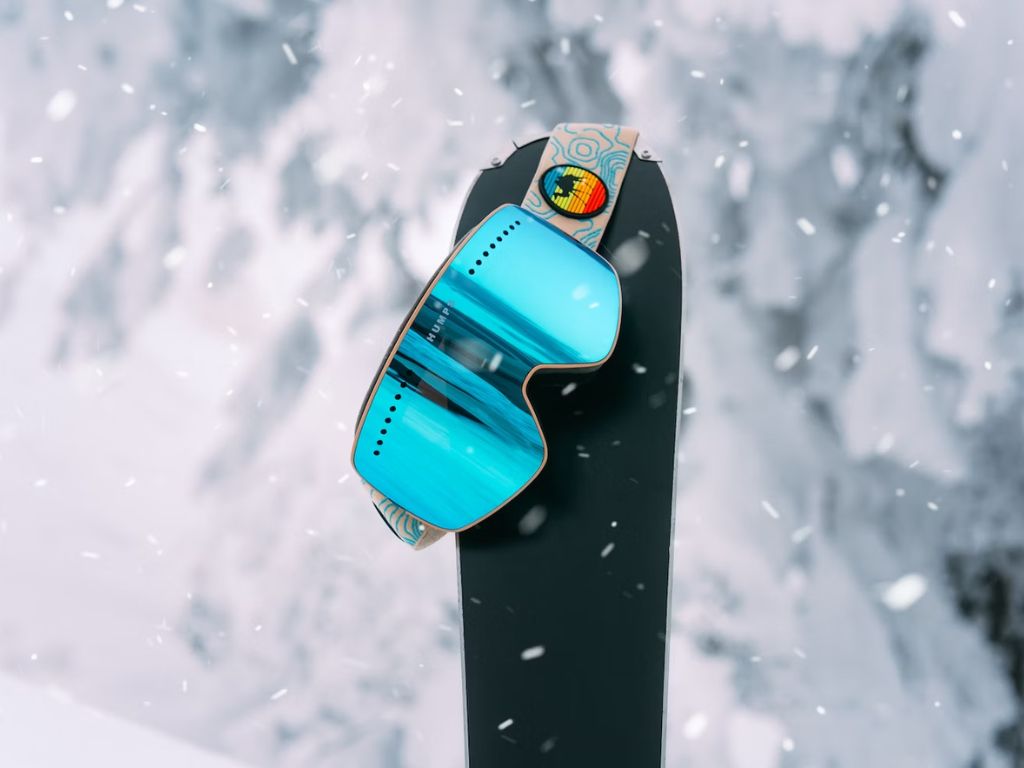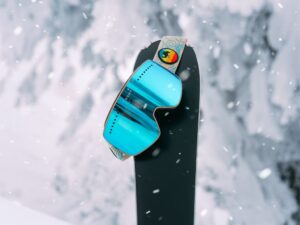Today, let’s dive into a question that often pops up among rookies: Can beginners handle advanced snowboards? You know what I’m talking about.
Those slick boards seem to have a will of their own, making us feel like you gotta be worthy enough to ride. Well, I’ve been there, tested that, and I’m here to spill the snow beans.
Generally speaking, beginners can ride an advanced snowboard, provided that it’s done with patience, skill, and a thoughtful approach. Advanced or professional snowboards are optimized for maximum performance. As such, they may be hard to maneuver and take advantage of when ridden by a beginner.
While the term “advanced” might sound daunting, it’s important to recognize that progression in snowboarding is a personal voyage. Beginners willing to embrace challenges and invest time in skill development can eventually navigate an advanced board.
I know what you’re thinking. Common sense says, “After doing all that, are you even a beginner anymore?” I agree you aren’t, but balancing ambition with safety and comfort is better.
Just because you can doesn’t mean you should. As a beginner, I believe your goal should be to conquer difficult slopes rather than difficult boards. Let me explain.
What’s the difference between a beginner and an advanced snowboard?
| Category | Beginner Snowboard | Advanced Snowboard |
| Board Type | All-mountain or freestyle for versatility | Freeride or aggressive for specific terrain |
| Flex Rating | Softer for easier control and maneuvering | Stiffer for high-speed stability |
| Forgiveness | More forgiving for learning | Less forgiving, demands precision |
| Profile | Mostly flat or rocker for stability | Camber or hybrid for advanced performance |
| Shape | Directional for simple turns | Twin or directional twin for versatility |
| Base Material | Extruded base, easy to maintain | Sintered base, better speed, and durability |
| Size | Shorter for better control | Longer for stability at speed |
| Sidecut | Deeper sidecut for tighter turns | Shallower sidecut for smoother lines |
1. Board Type
An all-mountain or freestyle board is your gateway to versatility if you’re a beginner. These boards are like your trusty Swiss army knife, ready to handle various terrains and conditions. In comparison, advanced riders often lean toward freeride or aggressive boards.
2. Flex Rating
For those starting out, a softer flex is your best friend. It gives you the maneuverability and control needed to build your skills.
On the advanced side, stiffer flexes come into play. Why? Because they’re designed to handle high speeds and aggressive turns, demanding precision from experienced riders.
3. Forgiveness
Beginner boards are more tolerant of occasional missteps as you learn the ropes. On the flip side, advanced boards dial down this kindness.
4. Profile
Beginners often ride flat or rocker profiles. These profiles provide stability and make learning to balance a bit easier. Due to amplified performance, Camber or hybrid profiles are your go-to for the pros-in-training.

5. Shape
Beginners find comfort in directional shapes. With a slightly longer nose, these shapes make those early turns less daunting. Advanced riders might opt for twin or directional-twin shapes.
6. Base Material
Advanced riders crave the power of a sintered base. For beginners, however, an extruded base is your match.
7. Size
Smaller boards are your allies, my newbie friends. They offer better control, helping you build your foundation.
8. Sidecut
For beginners, a deeper sidecut eases you into turns, making your ride feel more manageable. Advanced riders might go for a shallower sidecut.
As you can say, there are hardly any similarities between beginner and advanced snowboards. And for a very good reason.
Should beginners ride an advanced snowboard?
Technically, it’s possible for a beginner to ride an advanced snowboard, but they shouldn’t. Advanced snowboards are designed for experienced riders, offering enhanced performance and responsiveness. These boards might prove overwhelming for someone starting out, potentially leading to safety concerns.
Here’s the deal: a beginner can hop on an advanced snowboard. But (and this is a powder-sized “but”), it’s not as simple as strapping in and zooming down the hill. There’s a bit more to it.
See, advanced snowboards are like sports cars. They’re built for top-notch performance, engineered to handle aggressive turns, high speeds, and all the tricks in the book. And just like a sports car, they require a skilled driver to harness that power.
Imagine handing a new driver the keys to a supercar – you get the idea.
So, the real question isn’t whether a beginner can physically stand on an advanced board – it’s whether they can truly ride it with control, safety, and enjoyment.
The truth is, it’s all about progression. Like you wouldn’t go from sledding to a double black diamond run in a day, hopping onto an advanced snowboard without building your skills isn’t the wisest move.

Challenges Faced by Beginners on Advanced Snowboards
Based on my experience, if you try to ride an advanced snowboard as a beginner, you’ll face 3 challenges:
1. Control Issues
Picture this: you’re on an advanced snowboard, and it feels like the board has a mind. One moment you’re cruising. The next, you’re wrestling with it to stay on track.
In short, the responsiveness that makes advanced boards thrilling for experts can overwhelm beginners still finding their snow legs.
2. Turning Issues
Beginners might need help to initiate turns smoothly. Those quick and agile turns that experienced riders make look effortless might feel more like a tango with gravity for newcomers. It’s a learning curve that demands patience and practice.
3. Confidence Impact
Riding a board that feels a tad out of your league can knock your confidence down a peg or two. Doubt creeps in, and suddenly, that ride you’ve been excited about feels daunting. Your mountain mojo takes a hit.
Should I buy a cheaper beginner board or an intermediate board?
Beginners can choose a beginner or an intermediate snowboard as both types have their places in a starting quiver. It all boils down to your style and goals. A beginner board is your launchpad if you’re all about mastering the basics. If you’re hungry for more challenges, an intermediate board might be your route.
Remember, there’s no rush. Snowboarding is about enjoying the ride, whether on beginner’s gentle slopes or intermediate’s twisty trails.
Your board is your ticket to adventure, so choose one that aligns with your current skill level while keeping an eye on the horizon of your potential.
Expert QnA
Q. Is it safe for a beginner to try an advanced snowboard?
Generally, it’s very unsafe for a beginner to try an advanced snowboard. Advanced boards are designed for experienced riders, offering higher speeds and responsiveness. Beginners might find them challenging to control, potentially leading to safety concerns.
Q. How do you know if you are an advanced snowboarder?
Being an advanced snowboarder isn’t just about conquering black diamond runs. It’s about mastery and finesse. You’re on the advanced path if you’re consistently nailing technical maneuvers, carving with precision, confidently tackling various terrains, and even experimenting with tricks.
Q. What skills should I have before trying an advanced snowboard?
Before taking on an advanced snowboard, ensure you’ve got a solid grip on the basics. Master controlling your speed, making clean turns, and confidently stopping. Practice dynamic carving, switch riding, and handling varied terrain as you progress. It’s also crucial to be comfortable with different riding styles.
Q. How long does it usually take to adapt to an advanced snowboard?
On average, with consistent practice and proper guidance, beginners could start feeling comfortable on an advanced board within a season or two. The learning curve varies from rider to rider. Adapting to an advanced snowboard depends on your existing skills, frequency of practice, and willingness to embrace challenges.



